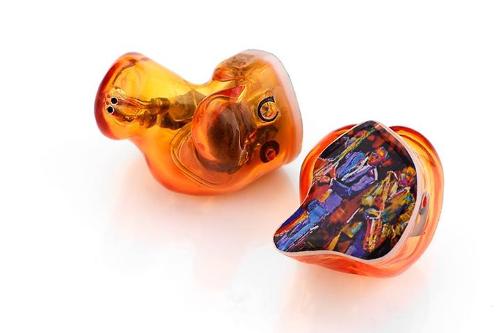LCM BD4.2 Hybrid Ciem
LCM BD4.2 is equipped with a 4 BA and 2 Dynamic drivers.
Lows
Impactful, full-souding, thunderous. It has all the juice you want, all the juice you need. No matter the genre, the pot enables it to be the jack of all trades.
Mids
A little laid back througout the spectrum. They are not as detailed and articulate as highs frequencies. They are thin sounding. They need more weight down there!
Vocals are clear, sometimes prone to sibilance. Female vocals especially. Although the micro details and resolution is top-notch.
Highs
Sparky, energetic, crisp. Yes! They are everything you want highs to be. Resolution is again, top notch. They are very coherent and blissful.
Soundstage
How deep is your love? Well this mate's headstage is huge. Every instrument is distinctive, well-placed and well-layered.
PraT
Well here it comes. BD4.2 is NOT a particularly fast monitor. In fact, I am surprised to see it struggle with genres like speedmetal.
I am not happy with this section. Other than that, it is a great monitor.
Tonality
Somewhat neutral - analytic. (bass dialed %50) Overall it is a bright earphone. If you like sparkly highs, you'll love Lear.
Genres
I found LCM BD4.2 exceptionally great with classical music. Bach, Chopin, Frederic never sounded this good before.
Final Words
If you are a detail freak, resolutionist, airyness junkie, this monitor is for you. If you want to listen black metal, this monitor is not for you and you'll have to look elsewhere.
Thanks.
LCM BD4.2 is equipped with a 4 BA and 2 Dynamic drivers.
Lows
Impactful, full-souding, thunderous. It has all the juice you want, all the juice you need. No matter the genre, the pot enables it to be the jack of all trades.
Mids
A little laid back througout the spectrum. They are not as detailed and articulate as highs frequencies. They are thin sounding. They need more weight down there!
Vocals are clear, sometimes prone to sibilance. Female vocals especially. Although the micro details and resolution is top-notch.
Highs
Sparky, energetic, crisp. Yes! They are everything you want highs to be. Resolution is again, top notch. They are very coherent and blissful.
Soundstage
How deep is your love? Well this mate's headstage is huge. Every instrument is distinctive, well-placed and well-layered.
PraT
Well here it comes. BD4.2 is NOT a particularly fast monitor. In fact, I am surprised to see it struggle with genres like speedmetal.
I am not happy with this section. Other than that, it is a great monitor.
Tonality
Somewhat neutral - analytic. (bass dialed %50) Overall it is a bright earphone. If you like sparkly highs, you'll love Lear.
Genres
I found LCM BD4.2 exceptionally great with classical music. Bach, Chopin, Frederic never sounded this good before.
Final Words
If you are a detail freak, resolutionist, airyness junkie, this monitor is for you. If you want to listen black metal, this monitor is not for you and you'll have to look elsewhere.
Thanks.





